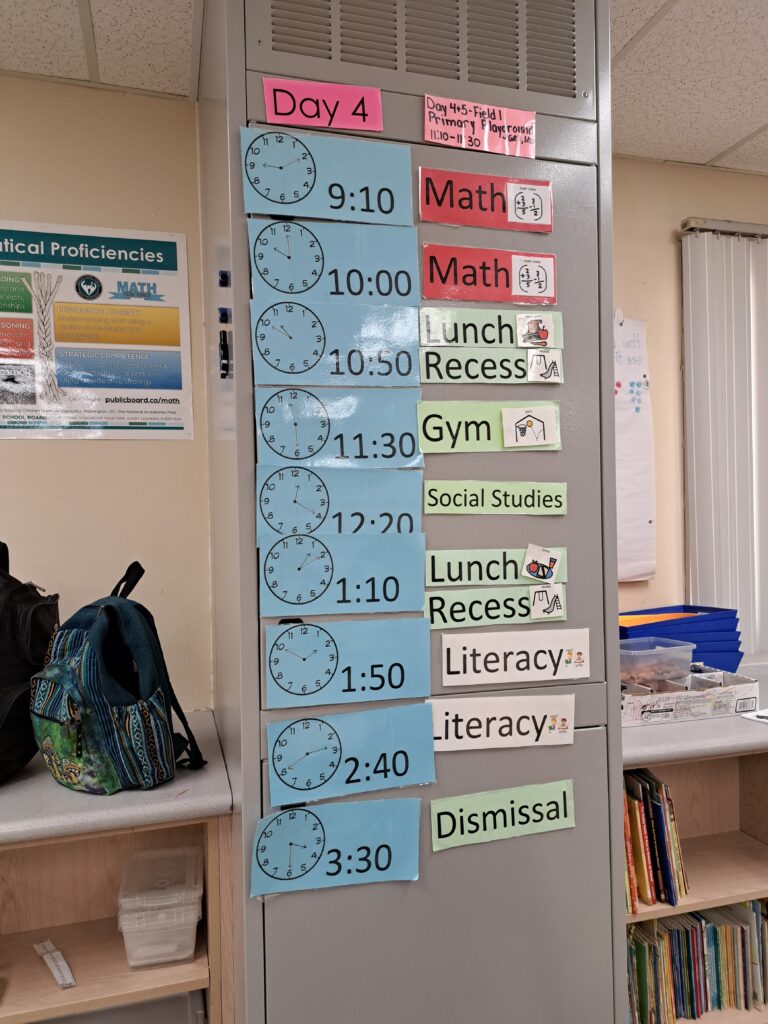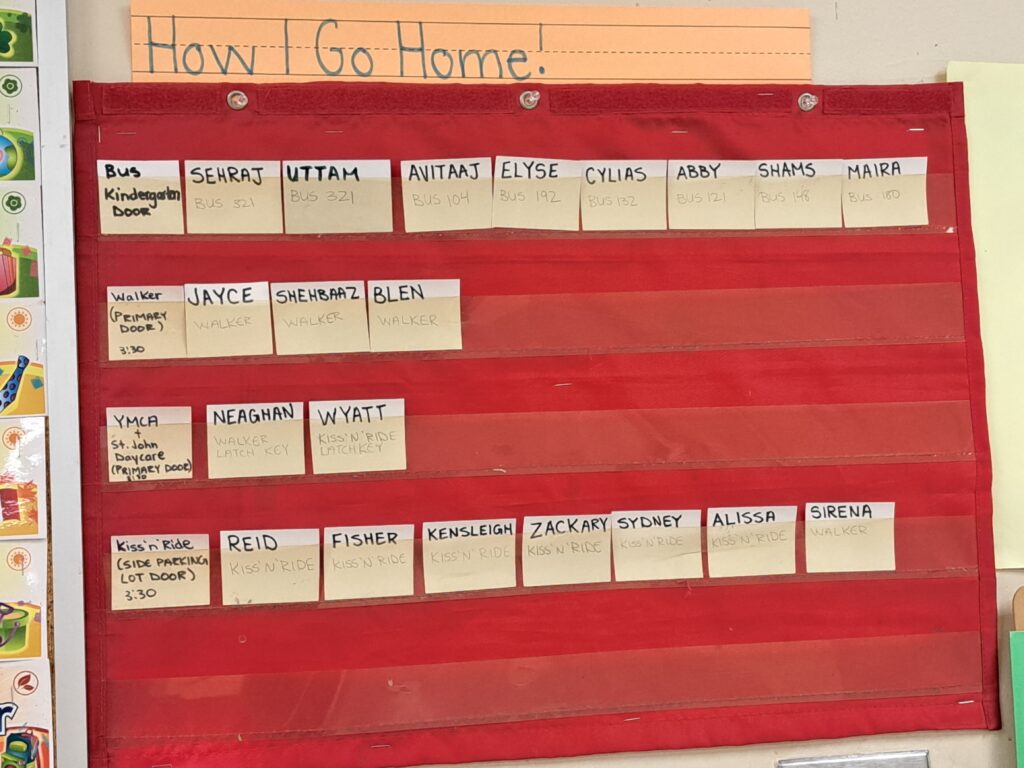Systems, Structure, and Routines
For me, this practicum placement was focused on classroom management, systems, structures, routines, and rules. This was my first primary placement (grade 1), and I learned a lot about being firm with the rules and consistent with the structure of lessons. My associate teacher had organizational systems in place for students’ daily schedules (see Figure 1), how students went home (see Figure 2), the organization of books, and the play bins. For example, each student was assigned a number that corresponded to the bin that they could play with if there was extra time. The daily schedule (see Figure 1) was magnetic so that it could be switched out easily. The “How I Go Home” chart (see Figure 2) had names that were moveable if there were changes and could be flipped backwards if a student was absent that day. Each day, students would come in from recess, leave their outdoor shoes in the hallway, go straight to their desks, get their winter gear off, hang it up on the coat racks, and then get their nameplates out to practise writing their name during announcements. After announcements was math (except for day 1). Math always started with the same routine: Number flashcards, number talk with chart paper, and then DPA with counting videos. After that, the new unit or lesson could be taught. When it was time for lunch, students made a line either at the sink to wash their hands, or at the door to go to the washroom. Everything was structured. To me, this seemed very monotonous and unimaginative. However, when I tried to make lessons more “fun” and veer from their routines and worksheets, the students had a hard time adjusting. Classroom management became a lot more difficult when the routine was altered. The more interactive I made lesson activities, the more students misbehaved. It was a balance between consistency and monotony.
Figure 1
Students’ Daily Schedule

Figure 2
The “How I Go Home” Chart
